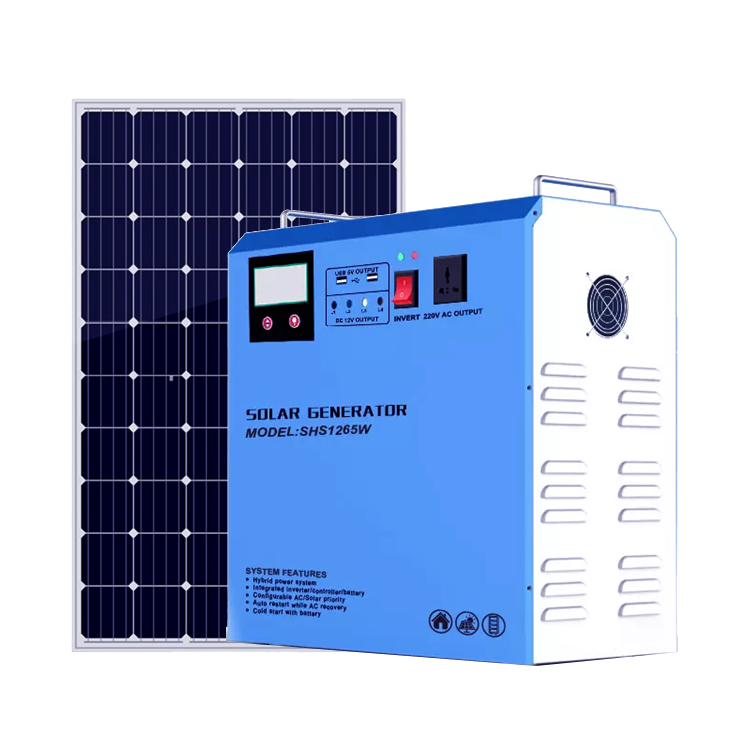Email format error
Email cannot be empty
Email already exists
6-20 characters(letters plus numbers only)
The password is inconsistent
Email format error
Email cannot be empty
Email does not exist
6-20 characters(letters plus numbers only)
The password is inconsistent


Embracing the Power of Off-Grid Wind Turbine Inverters: A Comprehensive Guide
Renewable energy is more than a trend; it's a revolution reshaping the way we think about power. Among the various sustainable energy sources, wind energy stands out for its efficiency and reliability. One crucial component of harnessing wind power effectively, especially for off-grid applications, is the off-grid wind turbine inverter. This blog will explore the ins and outs of off-grid wind turbine inverters, why they're essential, and how they can benefit both individuals and businesses looking to go green.
What is an Off-Grid Wind Turbine Inverter?
An off-grid wind turbine inverter is a device that converts the direct current (DC) generated by wind turbines into alternating current (AC) that can be used by household appliances or stored in batteries. Unlike grid-tied systems, off-grid systems operate independently of the main power grid, making them ideal for remote locations, emergency backup systems, or those who simply want to live a more self-sufficient lifestyle.
How Do Off-Grid Wind Turbine Inverters Work?
Wind turbines capture kinetic energy from the wind and convert it into electrical energy. This energy is initially in the form of DC. However, most of our appliances and devices run on AC. This is where the off-grid wind turbine inverter comes into play. It transforms the DC into usable AC power, ensuring that the energy generated can be effectively used or stored.
Key Components of an Off-Grid Wind Turbine System
1. Wind Turbine: Captures wind energy and converts it into electrical energy.
2. Battery Bank: Stores the converted energy for later use.
3. Off-Grid Wind Turbine Inverter: Converts DC to AC and regulates the power supply.
4. Charge Controller: Ensures that the batteries are charged efficiently and prevents overcharging.

Advantages of Using Off-Grid Wind Turbine Inverters
Independence from the Grid
One of the most significant benefits of using an off-grid wind turbine inverter is the independence it provides. Being off-grid means you're not reliant on the traditional power grid, which can be a game-changer in areas with unreliable power supplies or frequent outages. This independence also translates to fewer electricity bills, making it a cost-effective solution in the long run.
Environmental Benefits
Wind energy is one of the cleanest energy sources available. By utilizing off-grid wind turbine inverters, you're reducing your carbon footprint and contributing to a more sustainable future. Unlike fossil fuels, wind energy doesn't produce harmful emissions or deplete natural resources.
Reliability and Consistency
Wind turbines, when paired with efficient off-grid inverters, can provide a consistent power supply. Modern inverters are designed to handle variable wind speeds and ensure that the power output remains stable. This reliability is crucial for off-grid living, where uninterrupted power is a necessity.
Flexibility and Scalability
Off-grid wind turbine inverters offer a great deal of flexibility. They can be scaled to meet your specific energy needs, whether you're powering a small cabin or a large homestead. As your energy requirements grow, you can add more turbines and inverters to your system.
Choosing the Right Off-Grid Wind Turbine Inverter
Selecting the right inverter is crucial for the efficiency and longevity of your off-grid system. Here are some factors to consider:
Power Capacity
Ensure that the inverter can handle the maximum power output of your wind turbine. This is usually measured in watts or kilowatts.
Efficiency
Look for inverters with high efficiency ratings. This means that more of the generated energy is converted into usable power, reducing waste.
Durability and Weather Resistance
Since off-grid systems are often located in remote or harsh environments, it's essential to choose an inverter that is durable and weather-resistant.
Battery Compatibility
Make sure the inverter is compatible with your battery bank. Some inverters are designed to work with specific types of batteries, such as lithium-ion or lead-acid.
Installing and Maintaining Your Off-Grid Wind Turbine Inverter
Installation Tips
1. Site Assessment: Conduct a thorough assessment of your location to ensure optimal wind exposure.
2. Professional Installation: While DIY installations are possible, hiring a professional can ensure that your system is set up correctly and safely.
3. Proper Grounding: Ensure that your system is properly grounded to protect against lightning strikes and electrical surges.
Maintenance Tips
1. Regular Inspections: Periodically inspect your wind turbine and inverter for any signs of wear or damage.
2. Cleanliness: Keep the inverter clean and free from dust and debris.
3. Battery Maintenance: Regularly check and maintain your battery bank to ensure efficient energy storage.
The Future of Off-Grid Wind Energy
As technology advances, off-grid wind turbine inverters are becoming more efficient, affordable, and accessible. Innovations in energy storage and smart grid technology are also enhancing the capabilities of off-grid systems. With the growing awareness of environmental issues and the push for sustainable living, the future looks bright for off-grid wind energy.
Conclusion
Off-grid wind turbine inverters are a pivotal component in the quest for renewable, sustainable energy solutions. They offer independence, reliability, and environmental benefits, making them an excellent choice for anyone looking to harness the power of the wind. By understanding how these inverters work and how to choose the right one, you can embark on a journey toward a greener, more self-sufficient lifestyle. Embrace the power of wind energy and let the off-grid wind turbine inverter be your guide to a sustainable future.

